OPERATION GRANBY
It had been a particularly busy year at RAF Akrotiri and the Station was looking forward to a more relaxed summer. But then came 2 August 1990 and the Station found itself thrust into the centre of the Gulf War activities. Operation Granby was up and running. The year had already been packed full of activity for RAF Akrotiri. A full programme of Armament Practice Camps
(APCs) 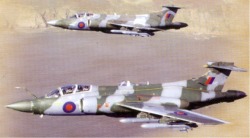 had been overlaid with a sequence of other intensive operational and training detachments, culminating in our use as reception airfield and Forward Mounting Base for Exercise Purple Venture 90. This full-scale Command Post Exercise involved some 600 personnel in setting up a Two-Star Joint Force HQ Akrotiri for the notional out of area deployment of a two-Brigade force. RAF Akrotiri looked forward to August when a sharp drop in planned activities would give personnel the opportunity to draw breath and relax briefly - then came 2 August. When asked on this occasion to reconfirm its requirement for reinforcement personnel to sustain 24-hour operations, the Station was not overly excited. When the first of these reinforcements arrived within 96 hours it confirmed what everybody had by then realised - this was no routine planning 'dust off ' but the first steps in what were to become known as Operations GRANBY, DESERT STORM, DESERT SHIELD, PROVIDE COMFORT and HAVEN. Co-incident with the request to review reinforcement requirements, a stream of other orders and instructions began to arrive from MOD and HQ Strike Command.
had been overlaid with a sequence of other intensive operational and training detachments, culminating in our use as reception airfield and Forward Mounting Base for Exercise Purple Venture 90. This full-scale Command Post Exercise involved some 600 personnel in setting up a Two-Star Joint Force HQ Akrotiri for the notional out of area deployment of a two-Brigade force. RAF Akrotiri looked forward to August when a sharp drop in planned activities would give personnel the opportunity to draw breath and relax briefly - then came 2 August. When asked on this occasion to reconfirm its requirement for reinforcement personnel to sustain 24-hour operations, the Station was not overly excited. When the first of these reinforcements arrived within 96 hours it confirmed what everybody had by then realised - this was no routine planning 'dust off ' but the first steps in what were to become known as Operations GRANBY, DESERT STORM, DESERT SHIELD, PROVIDE COMFORT and HAVEN. Co-incident with the request to review reinforcement requirements, a stream of other orders and instructions began to arrive from MOD and HQ Strike Command.
Most important was the order to freeze the APC squadron changeover then in train between the Tornado F3-equipped No 5 and No 29 Squadrons. After frenetic preparations, 12 aircraft and 20 crews deployed to Dhahran on 11 August. Within 2 hours of their arrival in theatre some of these aircraft mounted Air Defence (AD) patrols thus becoming the first UK units to arrive and be committed. Back at Akrotiri, 11/12 August saw the transit of 12 Jaguars from No 54 Squadron en route to
Thumrait, while on 17 August 6 RAF Germany Phantoms, drawn from No 19 and No 92 Squadrons, arrived to provide a key element of our own emerging AD system. This was further enhanced by the arrival of No 20 Squadron RAF Regiment equipped with Blindfire Rapier
SAMs. Visiting Air Defence Ground Environment staff from UK, working with staffs from HQ British Forces Cyprus and 280 Signals Unit, quickly developed a comprehensive AD organisation, while local operations staff produced aircraft dispersal and local air defence plans. By the end of the month, a further deployment of No 11 Squadron F3s passed through Akrotiri to replace aircraft and crews from the original Dhahran detachment, who subsequently recovered to UK via Cyprus. August also saw the transit of Nimrod Maritime Patrol Aircraft en route to
Seeb, while other Nimrods arrived to operate from Akrotiri. Many of these operations involved Air-to-Air Refuelling
(AAR) support and, throughout this deployment phase, a constant stream of Tri-Star, VC10 and Victor tankers passed through Cyprus. Meanwhile, the Air Transport (AT) force of Tri-Star, VC10 and Hercules started intensive slip operations through Akrotiri. Further augmented by a huge variety of civil charter and other nation's air transport aircraft, the AT effort was to set the main pattern of air operations at Akrotiri. At varying levels of intensity, AT operations continued from the initial deployment phase through embargo operations to military build-up, support for hostilities, withdrawal and, ultimately, relief to Kurdish refugees in Northern Iraq and Turkey.
Some statistics from this immense task may serve to illustrate its impact on Akrotiri. For example, April 1990 saw 84 AT movements, while October brought 1460. Total October aircraft movements at 3162 were the highest since the Cyprus conflict in 1974. Such a surge in activity levels impacted on every element at RAF Akrotiri. While Station personnel bore the brunt of bringing the airfield to 24-hour operations, the arrival and integration of reinforcement personnel meant that, after some 2 weeks, most Sections were able to adopt sustainable three-shift work patterns. Faced with the influx of reinforcements and detachments and the huge throughput of crews, managing accommodation became something of a continuous nightmare. Bunk bedding and room sharing sometimes by up to 16 people in standard rooms became the norm, and some unlikely areas were pressed into service, with mattresses on floors, to serve as emergency accommodation. The system was severely stretched but the Station never had to resort to tents and, while many customers may have been far from comfortable, none went without a bed. Catering on 24-hour basis for such numbers also posed immense problems, on which were overlaid record-breaking demands for in-flight meals. Accounting in terms of both manpower and money also brought new challenges. While supporting intensive airfield operations, engineering and supply staffs had their own mountains to climb. In a very short timescale, the Armourers found themselves controlling one of the largest bomb dumps in the RAF - hastily reconverted from peacetime storage use by the efforts of a locally - based squadron of Royal Engineers and Property Services Agency. The inload and outload of those dumps involved all 3 Services in intensive working which ensured support for the strike aircraft. While continuing with its greatly increased resupply tasks, the Joint Supply Unit faced the major challenge of receiving, storing and managing record quantities of aviation fuel.
Normal weekly issue of AVGAS is 960 cubic metres; in Granby this rose to a weekly average of 4715 cubic metres. Between 1 - 27 January 1991, more fuel was issued than in the whole of 1989. As the possibility of hostilities grew ever nearer and
British land forces were committed to the UN multi-national force facing Iraq, plans were developed to cope with potential casualties. A complex aeromedical evacuation system was put in place and medical services and facilities at Akrotiri were fully committed. The Princess Mary's RAF Hospital
(TPMH) expanded from its normal 60-bed capacity to its full 200-bed capability by re-activating and equipping normally dormant wards. British and Belgian service medical teams reinforced TPMH
staff. At the same time, a 300-bed Low Care Transit Facility
(LCTF) was established in a large storage building adjacent to the airfield to provide a holding area for up to 300 patients daily in transit from the Gulf in C130 aircraft and transferring to civil Boeing 737s at Akrotiri.
The Station Medical Centre was reinforced to provide cover for the greatly increased Akrotiri population, and also to allow the SMO to become the focal point for managing all the various aspects of the aeromed task. These ranged from training local Army and RAF personnel as stretcher bearers, through managing the 150 aeromed team personnel deployed to Akrotiri to provide medical cover on flights to and from the Gulf and UK, to setting up the necessary documentation cell. Akrotiri was the only link in the aeromedical chain where a 100% check on aircraft patient manifests could be made to enable the Medical Evacuation Cell at United Kingdom Land Forces to designate UK destination hospitals. Some 800 patients passed through the aeromed chain during Granby, actual battle casualties were mercifully few, and it was with great relief that the medical facilities were quickly disbanded on cessation of hostilities. In fact the
LCTF, which took some 17000 stock items to establish, was transformed in 24 hours into the venue for Akrotiri's victory celebration party! RAF Akrotiri, in common with all other British Forces Cyprus facilities, had assumed a high Internal Security (IS) alert posture.
The then-resident No 34 Squadron RAF Regiment and RAF Police personnel mounted higher profile operations; these involved manning additional Observation Posts, rapid deployment of snap vehicle check-points and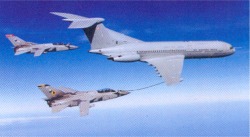 patrols by the resident Wessex of No 84 Squadron. There was also increased patrolling of all approaches including our extensive coastline. The 'professional' IS forces were augmented by elements from the Station Guard Force
(SGF), a specially trained squad totalling some 100 personnel drawn from all Sections and Units across the Station. SGF deployment put considerable extra manpower demands on already stretched units, but their use throughout the operation greatly enhanced the defensive posture. IS operations were further complicated when, as acclimatised troops, No 34 Squadron was put on standby for deployment to the Gulf in two half-squadron groups. In due course they were replaced at Akrotiri by No 2 Squadron RAF Regiment and, at the beginning of September, the first of No 34 Squadron elements deployed to Bahrain to constitute the defence force for the RAF detachment in
Muharraq. The second element deployed in early October to Dhahran where they became part of a tri-national Saudi, US/UK force defending the air base and accommodation compounds. No 34 Squadron returned to Akrotiri and, after a short spell of leave, resumed responsibility for Akrotiri external IS defence in mid-December. patrols by the resident Wessex of No 84 Squadron. There was also increased patrolling of all approaches including our extensive coastline. The 'professional' IS forces were augmented by elements from the Station Guard Force
(SGF), a specially trained squad totalling some 100 personnel drawn from all Sections and Units across the Station. SGF deployment put considerable extra manpower demands on already stretched units, but their use throughout the operation greatly enhanced the defensive posture. IS operations were further complicated when, as acclimatised troops, No 34 Squadron was put on standby for deployment to the Gulf in two half-squadron groups. In due course they were replaced at Akrotiri by No 2 Squadron RAF Regiment and, at the beginning of September, the first of No 34 Squadron elements deployed to Bahrain to constitute the defence force for the RAF detachment in
Muharraq. The second element deployed in early October to Dhahran where they became part of a tri-national Saudi, US/UK force defending the air base and accommodation compounds. No 34 Squadron returned to Akrotiri and, after a short spell of leave, resumed responsibility for Akrotiri external IS defence in mid-December.
The outbreak of the Gulf War hostilities on 16 January 16 1991 led to a further heightening in Cyprus security states and once again all defence forces were heavily committed to the IS task. In particular, the Wessex of No 84 Squadron undertook a 50% increase in flying rate and a four-fold increase in numbers of aircraft on standby, including aircraft detached to other key locations within the Sovereign Base Areas. Sea defences had been enhanced by the arrival of three RN Attacker Class fast patrol boats whose high-profile patrolling of SBA waters, coupled with the operations of the attached Nimrod
MPA, increased maritime deterrent capabilities immeasurably. The end of hostilities brought a welcome return to more normal operations for the IS forces. However, the recovery of forces from the Gulf and subsequent operations for Kurdish relief and deterrence of further Iraqi aggression meant that, with only a few short breaks, the airfield continued to support 24-hour operations some time after the conflict. The existence of the Cyprus bases and their instant availability to support large-scale deployments to the Middle East were critical factors in enabling Britain to provide speedy military assistance to UN operations in the Gulf conflict.
|
OPERATION TELIC
Towards the end of 2002 the middle east looked set to be firmly, once again, in the media spotlight. The threat from the use of Weapons of Mass Destruction (WMD) from Iraqi forces under the dictatorship of Saddam Hussein proved such that the US Department of Defence and the UK Ministry of Defence felt it necessary to draw up plans for a possible Gulf War II. It came as no surprise at all to the residents of RAF Akrotiri that this lone island in the east of the Mediterranean would figure largely in those plans.
These plans became reality, Operation IRAQI FREEDOM commenced with UK forces operating under the code name of Operation TELIC.
In January 2003 no decision had yet been made as to forthcoming war with Iraq. UN inspectors in the country were still urging Saddam Hussein to comply with resolutions concerning WMDs. On 7 January the government ordered the largest deployment of troops since the first Gulf War. RAF Akrotiri commenced 24 hours operations enabling 2 Gp aircraft constant transit to and from the Middle East. With the expected numbers and the diversity of aircraft a lot of work was needed to make the airfield suitable and it soon became a construction site. Dispersals were added and existing ones enlarged. The airfield had a very short space of time in which to ready itself for some of the largest aircraft in the world to start transiting through. The station had quickly become a great deal busier and there was on ominous sign for the future as the weather also played its part. Conditions were such that a tornado formed just off the coast and threatened to cause havoc across the station. However, with fast jets airborne and out of danger and some near misses for the newly resident Royal Navy Task Group, RAF Akrotiri had a narrow escape. As the tornado moved north Limassol was not so lucky and a great deal of storm damage was caused.
February 2003 saw the beginning of the large influx of USAF personnel mainly to support the large tanker fleet that were to take up residence at RAF Akrotiri. This was a far cry from a base used to having only a handful of aircraft remaining at the airfield at any one time, along with occasional Armed Practice Camps (APC). Alongside the tanker fleet was a whole host of various rotary and fixed wing
aircraft. Fitting them all onto this small peninsular proved to be
a real jigsaw puzzle with aircraft regularly using taxiways as a means
of parking. The month saw some other very interesting arrivals to
the region, two of the largest were the US Aircraft Carriers USS Harry
Truman and USS Theodore Roosevelt and their accompanying task
units. The logistics required to support the carrier groups were
enormous. RAF Akrotiri supported the constant ship-to-shore
flights providing fuel, supplies and mail to the 36,000
sailors.
February also saw another
example of Mother Natures helping hand with the second wettest month
since 1956 when a total of 152.8mm of rain fell in a month. that
averages just 66.1mm.
March 2003 saw a
significant escalation of activity accompanied by rumours that a 'war
with Iraq was imminent. The construction of the extra dispersals was
complete, and RAF Akrotiri could boast on extra 11 acres of dispersal
space for aircraft to park. The airfield was crammed with aircraft and
personnel. In all over 200 extra US Forces were now resident on base but
the atmosphere was one of anticipation. Towards the end of the month the
first Aeromed flights began to arrive
from the Middle East for TPMH. The stark reality what was happening was close
to everyone's thoughts and gave! an
insight into what was to come. Security Awareness around the base rose
considerably after war protesters managed to gain access to the base.
Some were arrested as a result of their trespass but many remained just
outside the perimeter protesting peacefully. The station Fire and
Rescue service received reinforcements when 20 USAF fire-fighters joined
them. For the first time in RAF history. UK and USAF fire-fighter were
working side-by-side. The partnership worked and 67 aircraft emergencies
Were successfully dealt with. On 20 March 2003 the war began. In the
early hours of the morning a combination of F-117 Stealth Fighters and
F-16 aircraft, along with around 40 long-range cruise missiles targeted
buildings deep in Baghdad, Working on. an intelligence tip-off, some the
missiles were targeted Saddam Hussein himself. The Iraqi leader
narrowly escaped, but the war was firmly underway.
A number of sorties were
flown deep into Iraq with over 130 different aircraft types flying over
the skies of Iraq. Akrotiri's new resident tanker fleet began an intense
period of flying. A total of 5 miles of extra fuel piping was required
to suck airport!!
On the 13th of April 2003
US troops to control of Baghdad as the Iraqi regime collapsed. As a
result, fewer missions were required to be flown into the Gulf area and
this had a knock on effect on RAF Akrotiri. Towards the end of April the
first fast jet crews transited through Akrotiri on their way back home
to UK. At the same time a USAF C-17 departed to land in the heart of
Baghdad loaded with humanitarian supplies.
On the 1st May 2003,
President George W Bush, declares the war officially over and a great
victory over the Iraqi regime. Operation TELIC however, is far from over
and whilst troops remain in Iraq, Akrotiri will continue to play its
part in the link from the middle east to the west.
RAF Akrotiri proved
itself a valuable asset to operations during the Gulf War II. Each and
every section was stretched to the limit helping maintain 24 hour
operations for a prolonged period and sustaining an airfield that was
busier than Luton Airport. It's worth noting therefore, that only 500
extra personnel were despatched to Akrotiri and looking at the
statistics it's quite amazing how much was achieved with such a small
increase in manpower. Between January and May there were over 15,000
aircraft movements.
Over 12,000 troops
transitted through RAF Akrotiri.
In 3 weeks Cyprus communications unit airfield section installed over
200 telephones and 30,000 metres of cable were connected
Over 14,000 personnel movements were processed by personal management
clerks.
Air Movements squadron dealt with between 25,000 and 56,000 kgs of air
cargo each month.
Over 10,000 kgs of classified mail and 31,000 kgs of air mail were
processed.
E-blueys rose from single figures to over 11,000 messages.
Operation TELIC Clerks - handled over 1000 additional enquiries.
- dealt with over 1000 air
movements.
- processed 3600 in-theatre
flight bookings.
The end of official
hostilities did not bring an immediate end to Operation TELIC however:
The presence of US and UK forces in the region maintaining security
meant that Akrotiri continued to play its role long after President
Bushes' speech. The conflict once again proved the worth of RAF Akrotiri
as a base. With its strategic position in the eastern Mediterranean it
continues to provide a crucial stepping stone for forces operating in
the area and wil no doubt continue to do so for many years to come.
|
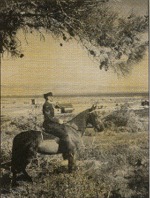


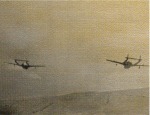
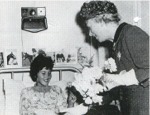
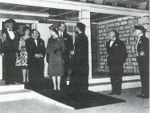
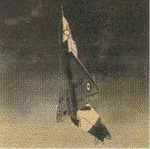

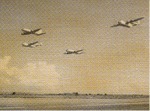
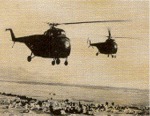


 had been overlaid with a sequence of other intensive operational and training detachments, culminating in our use as reception airfield and Forward Mounting Base for Exercise Purple Venture 90. This full-scale Command Post Exercise involved some 600 personnel in setting up a Two-Star Joint Force HQ Akrotiri for the notional out of area deployment of a two-Brigade force. RAF Akrotiri looked forward to August when a sharp drop in planned activities would give personnel the opportunity to draw breath and relax briefly - then came 2 August. When asked on this occasion to reconfirm its requirement for reinforcement personnel to sustain 24-hour operations, the Station was not overly excited. When the first of these reinforcements arrived within 96 hours it confirmed what everybody had by then realised - this was no routine planning 'dust off ' but the first steps in what were to become known as Operations GRANBY, DESERT STORM, DESERT SHIELD, PROVIDE COMFORT and HAVEN. Co-incident with the request to review reinforcement requirements, a stream of other orders and instructions began to arrive from MOD and HQ Strike Command.
had been overlaid with a sequence of other intensive operational and training detachments, culminating in our use as reception airfield and Forward Mounting Base for Exercise Purple Venture 90. This full-scale Command Post Exercise involved some 600 personnel in setting up a Two-Star Joint Force HQ Akrotiri for the notional out of area deployment of a two-Brigade force. RAF Akrotiri looked forward to August when a sharp drop in planned activities would give personnel the opportunity to draw breath and relax briefly - then came 2 August. When asked on this occasion to reconfirm its requirement for reinforcement personnel to sustain 24-hour operations, the Station was not overly excited. When the first of these reinforcements arrived within 96 hours it confirmed what everybody had by then realised - this was no routine planning 'dust off ' but the first steps in what were to become known as Operations GRANBY, DESERT STORM, DESERT SHIELD, PROVIDE COMFORT and HAVEN. Co-incident with the request to review reinforcement requirements, a stream of other orders and instructions began to arrive from MOD and HQ Strike Command.
 patrols by the resident Wessex of No 84 Squadron. There was also increased patrolling of all approaches including our extensive coastline. The 'professional' IS forces were augmented by elements from the Station Guard Force
(SGF), a specially trained squad totalling some 100 personnel drawn from all Sections and Units across the Station. SGF deployment put considerable extra manpower demands on already stretched units, but their use throughout the operation greatly enhanced the defensive posture. IS operations were further complicated when, as acclimatised troops, No 34 Squadron was put on standby for deployment to the Gulf in two half-squadron groups. In due course they were replaced at Akrotiri by No 2 Squadron RAF Regiment and, at the beginning of September, the first of No 34 Squadron elements deployed to Bahrain to constitute the defence force for the RAF detachment in
Muharraq. The second element deployed in early October to Dhahran where they became part of a tri-national Saudi, US/UK force defending the air base and accommodation compounds. No 34 Squadron returned to Akrotiri and, after a short spell of leave, resumed responsibility for Akrotiri external IS defence in mid-December.
patrols by the resident Wessex of No 84 Squadron. There was also increased patrolling of all approaches including our extensive coastline. The 'professional' IS forces were augmented by elements from the Station Guard Force
(SGF), a specially trained squad totalling some 100 personnel drawn from all Sections and Units across the Station. SGF deployment put considerable extra manpower demands on already stretched units, but their use throughout the operation greatly enhanced the defensive posture. IS operations were further complicated when, as acclimatised troops, No 34 Squadron was put on standby for deployment to the Gulf in two half-squadron groups. In due course they were replaced at Akrotiri by No 2 Squadron RAF Regiment and, at the beginning of September, the first of No 34 Squadron elements deployed to Bahrain to constitute the defence force for the RAF detachment in
Muharraq. The second element deployed in early October to Dhahran where they became part of a tri-national Saudi, US/UK force defending the air base and accommodation compounds. No 34 Squadron returned to Akrotiri and, after a short spell of leave, resumed responsibility for Akrotiri external IS defence in mid-December.
